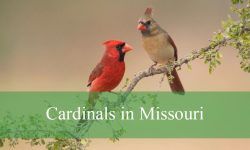At sunrise in New York City, before the subways roar and traffic fills the avenues, a soft flutter rises above the skyline. From fire escapes, rooftops, and cathedral spires, small gray silhouettes take to the air, circling between skyscrapers like drifting pieces of soft charcoal. Their wings flash silver in the morning light as they weave between water towers and billboards. These are pigeons, the ever-present residents of the city’s skies.
Loved by some and dismissed by others, pigeons in New York City have lived alongside humans for over 400 years, shaping the rhythms of parks, plazas, and rooftops. They’re often seen as ordinary — creatures of sidewalks and subway entrances — yet their lives are far more complex than most people imagine. Beneath their understated feathers lies a story of endurance, intelligence, loyalty, and surprising sophistication.
This deep exploration uncovers the secret lives of New York City’s pigeons — their origins, their family ties, their breathtaking homing abilities, and their unexpected contributions to the city’s ecosystem. What you learn about these seemingly simple birds may change the way you look at New York’s skyline forever.
Meet New York’s Pigeons

The Rock Pigeon: The City’s Winged Resident
The common rock pigeon (Columba livia) didn’t originate in America at all. These birds were brought from Europe in the 1600s as domesticated animals — valued for meat, messaging, racing, and companionship. Some escaped or were released, and from there they colonized the continent.
Today, the pigeons in New York City are descendants of those early flocks, living in an environment strangely similar to the cliffs and crags of their distant ancestors. Skyscrapers mimic stone ledges, fire escapes recall rocky outcrops, and sheltered rooftops provide nesting spaces remarkably close to their natural habitat.
With their shimmering neck feathers, stout bodies, and acute navigation skills, pigeons are uniquely suited to city life. They are not invaders — they are urban specialists, evolving alongside the city’s growth.
Why New York Is a Pigeon Paradise
Few cities in the world offer pigeons as much as New York does:
-
Countless ledges and crevices for nesting
-
Endless food scraps, grain spills, and seed-bearing trees
-
A mild urban climate with heat-retaining concrete and steam vents
-
Thick vegetation in parks like Central Park, Prospect Park, and Bryant Park
New York provides both danger and opportunity, but pigeons thrive in this mixture, becoming one of the most successful urban birds on the planet. Their mastery of the concrete wilderness is nothing short of extraordinary.
Anatomy and Adaptation
Built for Survival in the Urban Jungle
Pigeons may appear soft and mellow, but their bodies are athletic masterpieces. Their wings are long and pointed, allowing them to accelerate, pivot, and dive with jaw-dropping agility — essential skills for dodging taxis, window reflections, and hawks.
Their bones are lightweight yet strong, and their hearts beat at over 250 beats per minute during flight. This physiology allows them to travel up to 60 miles per hour and fly hundreds of miles in a single day when needed.
Even their eyesight is remarkable. Pigeons in New York City can see ultraviolet light and distinguish colors far better than humans. They notice motion almost instantly, a sense honed for avoiding predators and navigating chaotic traffic.
The Magic of Navigation
Scientists still marvel at the pigeon’s innate GPS system. These birds use a combination of Earth’s magnetic field, sun position, infrasound waves, and familiar landmarks to find their way home.
Racing pigeons — close relatives to the city’s flocks — have returned to New York from states like Virginia, Ohio, and even southern Canada.
This same homing ability guides wild pigeons as they move between roosts, feeding areas, and water sources in the city. It’s no coincidence that you often see the same groups of pigeons occupying specific blocks — their navigation system always leads them home.
Behavior and Daily Life
Morning Flights and Roof Gatherings
Every morning, pigeons launch from rooftops in small, synchronized flocks. They circle once or twice, rising on warm air, then break into the city in search of food. They visit parks, train yards, construction sites, and occasionally outdoor cafés, relying on both natural instincts and learned routines.
By afternoon, they return to their favorite ledges and water towers, preening and sunbathing. These habits are not random — pigeon flocks have territories, routines, and complex relationships that define their daily lives.
Social Creatures With Strong Bonds
Pigeons are surprisingly social. They recognize flock members individually, form deep partnerships, and maintain long-term friendships.
Pairs mate for life, raising brood after brood in the same rooftop or ledge nest. If one partner dies, the surviving pigeon may grieve for days before seeking a new mate.
Young pigeons, called squabs, are raised with dedicated parental care. Just like in other bird species with strong bonds, both parents feed the chicks with “crop milk,” a nutrient-rich substance produced in their throats — a trait they share with flamingos and penguins.
Intelligence and Memory
Pigeons are among the most intelligent birds on Earth. Studies show they can:
-
Recognize human faces
-
Distinguish letters of the alphabet
-
Remember hundreds of images
-
Understand concepts like space, texture, and even artistic styles
In New York, pigeons quickly learn which subway entrances are warm, which parks offer food, and which streets pose danger. Their intelligence allows them to survive in a world far more complex than any natural environment.
Diet and Feeding Habits
More Than Just Bread Eaters
While many New Yorkers toss bread to pigeons, their natural diet is far more diverse. In the wild, they eat:
-
Seeds
-
Grains
-
Fruit
-
Nuts
-
Small invertebrates
Urban pigeons adapt this diet to what’s available, which may include leftover bagels, pizza crusts, or seeds scattered by bird lovers. Contrary to common myths, occasional bread won’t harm pigeons — but a seed-rich diet keeps them healthier and stronger.
Pigeons in New York City often benefit from parks where natural seeds and berries abound, allowing them to maintain a more balanced, nutritious diet.
How Pigeons Forage
Pigeons are ground feeders. They prefer flat surfaces where they can walk, peck, and swallow quickly. Their feeding method is unique among birds — they can drink by suction rather than needing to tilt their heads back, making hydration in fountains and puddles fast and efficient.
In busy places like Union Square and Central Park, pigeons forage in flexible groups, coordinating movements and communicating with soft coos and subtle body motions.
Nesting and Reproduction
Rooftop Nurseries
Pigeon nests are simple constructions of twigs, trash, and leaves — but they are remarkably effective. The same nest may be used for years, becoming sturdy with layers of dried droppings and added materials.
Females lay two eggs per clutch, and both parents take turns incubating them. After hatching, squabs remain hidden in the nest for nearly a month, one of the longest nestling periods among city birds. This extended childhood allows them to develop stronger wings and muscles.
It’s no wonder baby pigeons are rarely seen — by the time they leave the nest, they’re already nearly adult-sized.
Family Partnerships
Pigeons work together as couples. The male guards and brings food, while the female broods the eggs and young. This cooperative parenting is a big reason the species thrives in demanding urban environments.
In New York’s unpredictable weather — from heat waves to blizzards — this partnership ensures that squabs survive challenges that would defeat more fragile species.
Pigeons and the City Ecosystem
Nature’s Clean-Up Crew
Though often overlooked, pigeons in New York City play a valuable ecological role. They clean up discarded food, reducing waste and helping prevent rodent overpopulation.
They also disperse seeds, helping plants spread — especially berry-producing trees and shrubs. Their movements between parks and rooftops contribute to micro-ecosystem balance in surprising ways.
Prey for Urban Raptors
In recent decades, New York’s skies have filled with returning birds of prey — most notably red-tailed hawks, peregrine falcons, and Cooper’s hawks. These predators rely heavily on city pigeons for food.
Without pigeons, the city’s growing raptor populations would struggle. The rebirth of iconic hawks like Pale Male in Central Park was possible partly because pigeons supply abundant, consistent nutrition.
Thus, pigeons are not just part of the city — they help sustain a thriving urban food web.
Pigeons and People
A Complicated Relationship
New Yorkers have mixed feelings about pigeons. Some adore them; others consider them pests. But the truth is that pigeons thrive precisely because people built the perfect environment for them.
They are here not by accident, but because cities replicate the cliffs and shelters from which they evolved. Their proximity to humans is not a flaw — it’s a deeply intertwined partnership going back thousands of years.
Pigeons as Heroes of Science and History
Few people realize the impact pigeons have had on human history. These birds:
-
Served as war messengers in WWI and WWII
-
Saved thousands of soldiers by delivering critical messages
-
Helped scientists understand genetics, color patterns, and navigation
-
Contributed to medical research on vision and learning
Some homing pigeons earned medals of honor for their bravery under fire, carrying messages through explosions, smoke, and gunfire.
In many ways, the pigeons in New York City are living reminders of a time when humans and birds worked side by side.
Myths and Misunderstandings
Myth 1: Pigeons Spread Major Diseases
False. Pigeons pose minimal risk to human health when basic sanitation is maintained.
Myth 2: Pigeons Are Dirty
False. Pigeons preen constantly, keeping feathers clean and aligned.
Myth 3: Pigeons Are Stupid
False. They are among the most intelligent birds on Earth.
Myth 4: Pigeons Can Live Only on Human Food
False. They thrive on seeds, berries, and natural foods found in parks.
Myth 5: There Are Too Many Pigeons
False. Pigeon populations rise and fall naturally based on food availability and predation.
Understanding these truths helps people appreciate pigeons in New York City as living threads in the urban tapestry — not pests, but survivors.
Pigeons and Conservation
The Surprisingly Fragile Side of an Urban Bird
Though pigeons seem abundant, their health hinges on the availability of safe roosts, clean water, and accessible food. Construction, pollution, and chemical control methods can harm populations.
Advocates encourage humane management and habitat protections, ensuring pigeons coexist peacefully with people while maintaining ecological stability.
Ethical Approaches to Coexistence
Instead of harm, cities can manage pigeon populations through:
-
Controlled feeding zones
-
Nesting platforms
-
Birth control techniques like OvoControl
-
Habitat planning that keeps birds safe and away from traffic hazards
These strategies help balance human needs with respect for a species that has lived alongside us for millennia.
Surprising and Little-Known Facts About Pigeons in New York City
-
Pigeons can recognize their reflection — a rare ability among animals.
-
They can fly up to 60 mph and dodge obstacles with high precision.
-
Their feathers can reflect iridescent colors unseen by the human eye.
-
Pigeons remember faces and can distinguish friendly from unfriendly people.
-
A group of pigeons is called a “kit” or “flight.”
-
Their homing ability remains one of the great mysteries of animal navigation.
-
Some NYC pigeons are descendants of elite racing breeds.
-
They mate for life and maintain strong family bonds.
-
Baby pigeons stay hidden in nests longer than most songbirds.
-
Pigeons helped scientists understand Alzheimer’s disease models.
FAQs About Pigeons in New York City
Why are there so many pigeons in New York City?
Because the city offers ideal habitats, abundant food, and cliff-like structures that mimic their natural environment.
What do pigeons eat?
Seeds, grains, berries, and scraps — though seeds are healthiest.
Do pigeons carry diseases?
Only rarely, and mainly in unsanitary conditions.
Why don’t we ever see baby pigeons?
Squabs stay in the nest until nearly adult-sized.
How long do pigeons live?
Urban pigeons live 3–6 years; domesticated ones can reach 20+.
Can pigeons recognize humans?
Yes. They distinguish faces and remember individuals.
Why do pigeons bob their heads?
For balance and depth perception during movement.
Do pigeons migrate?
No. They are year-round residents.
Are pigeons protected by law?
They are protected from cruelty but not regulated like many native birds.
Why do pigeons gather on rooftops?
Rooftops offer warmth, safety, and clear views of predators.
Final Thoughts
The pigeons in New York City are more than gray birds on sidewalks — they are descendants of ancient navigators, partners in human history, and survivors in one of the world’s most challenging environments. Their lives unfold in the spaces above us: on ledges, rooftops, bridges, and open skies where the city’s heartbeat pulses through their wings.
They remind us that nature thrives even here, in the noise, the steel, and the neon glow. Every flutter of their wings is a quiet story of endurance, intelligence, and beauty — a reminder that New York’s skies are as alive as its streets.
To look up at a pigeon circling above a skyscraper is to see history, resilience, and wildness all at once — a part of the city’s soul hidden in plain sight.






